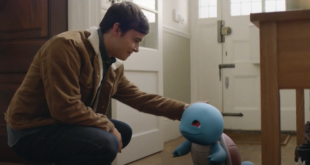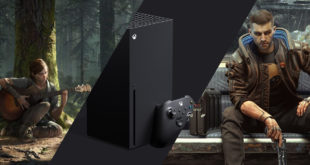For this article, I’ve selected a 5 month period in our long-term social campaign; the 3 months before the release of our game and the 2 months after our launch. This time-frame was the most vital part of our overall social marketing strategy.
Prior to launch, we wanted to create as much hype and excitement for the title as possible before it hit the shelves. While the two months after release were all about maintaining the momentum once the game came out. Our strategy changed slightly between these two periods to reflect that change.
—
It’s amazing how much you can do in a space of a few months. This is especially true when it comes to social media. Our game, Dying Light, is a first-person, zombie survival thriller set in the open world of Harran. It has a parkour-like movement system, a dynamic day and night cycle, and heaps of zombie brutality. It came out on the January 27th this year and it reached the No.1 spot on sales charts all over the world.
I believe that our social media campaign played a huge part in Dying Light’s success. Over the span of five months, we created some great content that reached millions and millions of people. We also released content that only reached a few.
When it comes to marketing on social networks, content is key. Without good stuff to show, you won’t get the reactions that you want. This is especially true when promoting a game, and there are a few things that I’ve learned while promoting Dying Light on social. Hopefully, these little content ideas and tips will also come handy to you.
Corpus Contentus
(The latin for content is body, meaning: content is king)
The following is a list of content that really worked well for us: small campaigns, major activities, and types of messages. I’ve divided them into little themes which hopefully will allow you to get some ideas of your own and use them for your own social strategy.
On-Time Marketing
With social marketing, it’s all about timing. Hashtags and trends change by the minute. Sliding into what’s popular on social networks in any given moment works wonders – after all, it’s all about being part of a big social event. Being part of a trending word makes you look cool, relevant, and you get to ride on the hashtag train. People search for hashtags – that’s when you and your message can appear.
A few months before our launch, one of the greatest events of all time happened: Kim Kardashian showed her bum in Paper Magazine. The cover and the accompanying hashtag were trending for days. So we went after it, and did our own version on the third day of the saga.
This simple image of a Kim Kardashian-like zombie became the most liked and shared post of ours at the time. And it did wonders for our rep, with fans positively commenting on the stab, friends of fans started to follow our page, and gaming sites publishing it as news without any PR support. This little stunt made us realise that On-Time Marketing works – and we went further with it.
This simple image of a Kim Kardashian-like zombie became the most liked and shared post of ours at the time. And it did wonders for our rep.
We used other social events, such as the #solareclipse2015 event (our game has a dynamic day and night cycle that we tied in to the event), and we tweaked our game for April Fools to give players a different (read: more trippy) gameplay experience for that day only.
These did wonders for our social reach, engagement, and public perception. People really resonate with these types of messages, so if you can tie in your game to an event that’s happening now, or in the future, do so. You’ll be glad you did.
Gameplay videos
Before we released our game, we showed a lot of gameplay footage – and I mean a lot. However, instead of hitting people with 12-minute gameplay videos, we did something different.
Each week we decided to release a short gameplay video that would be up to a minute long. To make it interesting, we tied each video to a specific theme – an element of gameplay (60 Kills in 60 seconds, Day and Night cycle, Be The Zombie), an event (Baseball World Series – killing zombies with bats) or topic (Epic Fails, First Week in Harran). We called them Dying HighLights – bite-sized gameplay videos of pure Dying Light awesomeness mixed with a bit of tongue-in-cheek humour.
These gameplay videos were a hit – they were being shared, retweeted and commented on like crazy. It really struck a chord with our Facebook community, reaching six-digit viewer and impression numbers. These videos really helped us in building hype for our product and in promoting our game. If you can show off your gameplay prior to the release then please do so. If you can show it off in small fragments in style that’s your own, even better.
To get an idea of what we did, you can check out our whole Dying HighLight collection right here.
Community Challenges
Once our game came out, our focus shifted – our aim was to keep the fans engaged. However, that doesn’t mean that you can’t use your fan-base as a promotional tool. Customer Word-of-Mouth is one of the most powerful marketing tools out there – and we decided to use it. We knew fans love our game, so it was time to let others that haven’t played it know about this too.
We asked our fans to participate in gameplay community challenges. For our first one, we asked our fans to submit a max 30 second long gameplay clip that made them feel like a badass. The process was simple – upload your clip to YouTube, tag it with the hashtag #BadAssDyingLight and send a Tweet with link and the hashtag. We gave people a week to send clips in.
The result of the campaign was staggering – we received hundreds of entries populating YouTube, and the resulting #BadAssDyingLight tag had over 1 million impressions on Twitter alone. The best part was that our fans were sending out Tweets with the link to their Dying Light gameplay showing our game from the best possible angle. Those fan-made Tweets where then commented on and retweeted by their friends, spreading info about how awesome the video and our game looks. It was Digital Word-of-Mouth at its best.
With the success of the first challenge, we issued three more. In total, our four community challenges generated over 7 million impressions, created a positive community feedback and image, and most importantly, fantastic user-generated content like this (which also went viral when we posted it):
Once your game comes out, issuing community challenges will be a great way to engage your fans, encourage user-generated content/word-of-mouth, and create a “for the community” image. Just a few things to remember – pick a theme that’s open for interpretation, a challenge that everyone can participate in (not just hardcore gamers), choose a hashtag that’s related to your game/brand, and make sure to include a prize. And most importantly – have some fun with it!
Your game in real life
This little asset is the crown jewel in our overall campaign. We knew that our Dying Light Parkour POV video had potential, but the final results blew our minds.
Our game is built around our Natural Movement system, or parkour. It is one of our core key features: go anywhere, climb anything, feel like a badass. To highlight this feature, we partnered up with Ampisound, a parkour group from the UK. We asked them to record a Dying Light-inspired real-life parkour video.
After letting Ampisound do their thing, we let them upload their video to their YouTube channel. We’ve also posted the video on our Facebook profile via the native player, and did a PR blast about the video. What happened next was nuts.
Within a space of 48 hours, our video was viewed over 2m times. It started being shared by high-profile sites such as Mashable, 9GAG, The LAD Bible, and others. Soon, we hit mainstream with BBC posting the clip on their site, and YouTube tweeted our video to their 50m+ followers. This video created amazing amount of exposure for us, with both the YouTube and Facebook hosted videos reaching millions in views. My thumb nearly had a spasm from the amount of times I swiped my screen to see the numbers refresh. The trajectory was exciting to watch, and really, really addictive to follow.
I guess the point I’m trying to make is that there are heaps of amazing and talented people out there doing some really awesome things: parkour artists, cyber-hackers, painters, dancers, magicians, and so on. If your game is built around a specific culture/social movement, then reach out to those that practice it in real life. You might just end up creating content that is truly inspiring and news worthy.
You can see our Dying Light Parkour POV super-viral video right here:
This video created amazing amount of exposure for us, with both the YouTube and Facebook hosted videos reaching millions in views. My thumb nearly had a spasm from the amount of times I swiped my screen to see the numbers refresh.
These activities were some of the most successful ones that we did during our campaign. However, we did some posts that weren’t that successful and didn’t generate high numbers. This does not mean that they were failures – not at all. They still portrayed our game in a positive light and promoted its features. The only thing that was “wrong” with them was that they didn’t reach our median numbers – they didn’t generate as many Likes, Shares, Re-Tweets as our average posts do.
So, here are message types that didn’t really perform that well on our social profiles.
Character profiles of obscure characters
People buy a lot of games, yet people don’t have that much time to play them. Unfortunately, I’m one of those people. The sad thing is that although I have so many games, there is only a handful that I have actually finished.
During our campaign, we have released profiles of our characters – little graphics that told the story of who our characters are and their stories and connections within our game. Our main protagonist and the supporting characters did really well on social. People liked the stories, commented on the characters themselves, and shared our posts around. However, when we started doing profiles of characters that you would classify as third-tier – i.e. NPCs that only had a small part to play in the game – the reactions from fans were a lot tamer.
It could be because a lot of our fans might have not had the interaction with those characters in our game, hence they have no emotional connection to them. Or maybe those characters were not really spotted/cared for by our fans. Either way, if you are to profile your characters, stick to those that are more prominent in your story. Leave those that don’t really make a mark.
Assets that are outside of the network
Experimenting with social media is fun. You always try to do something that hasn’t been done before in the hope that this is that genius idea that you were looking for that’s going to change the social game forever. We’ve experimented with different assets on our end – we created our own IFTTT’s and Amazon Wishlists to promote our game and then shared them on our social profiles. And as much as the ideas were cool and new, they didn’t really hit the shareability and engagement numbers that we hoped for.
Being a social and community manager for a game is one of the most intensely satisfying experiences one can ever go through. Your creativity, ideas, and caffeine levels will be running at an all-time high.
Personally, I think that the best social assets are those that are presented to you directly on the screen. If your fans have to click to view the asset somewhere else, their interest diminishes. This was also true for the IFTTT and Amazon assets that we created – people were just not that keen to go outside of the network/leave their Facebook/Twitter screen.
Quick side-track: This also applies to your videos. Without a doubt, a video posted in the Facebook native player performs a lot better than a Facebook post with a link to YouTube. Always post videos in FB native player – you will have much better results than just posting a link.
—
Remember: before launch, you are showing a product that no one has seen and played before, so you are hyping and selling the experience that gamers will have. You set expectations and give them a glimpse of what the product will be about. Through your social content you hope to stir their need for your game – you want them to want to your product.
It’s also a period where you want to reach/advertise to as many people as possible. Once the game is out, your hype and interest will slowly start to diminish as other products are being released on the market. That’s when you need to keep your title and community alive and engaged, which in turn, allows you to use your community as a promotional tool itself.
The few months prior to and post-launch will be the most hectic moments in your life. Enjoy them.
Looking back at all the work we did on Dying Light, I’m proud to say that I played a part in its success. Being a social and community manager for a game is one of the most intensely satisfying experiences one can ever go through. Your creativity, ideas, and caffeine levels will be running at an all-time high.
However, take some time to think about what it is that you would like to show your audience, and what it is that you would like your audience to know about your game. Find out your game’s key features and find out its unique selling points. Once you have those, create entertaining content that supports those features. I hope that these words of mine will help you stir your imagination, and help you in creating content that your fans will also love. All the best, good luck, and go forth!

 MCV/DEVELOP News, events, research and jobs from the games industry
MCV/DEVELOP News, events, research and jobs from the games industry



